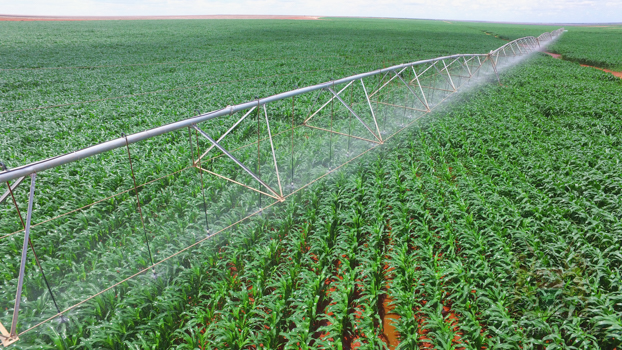Galana-Kulalu Irrigation Scheme to make Billions Every Year
The potential of the Galana-Kulalu irrigation scheme in the Kenyan Coast Region is endless. Like the Mwea Irrigation Scheme which generates more than 10 billion shillings every rice-growing season, It can generate billions, and make farmers millionaires in just a few years.
With only 30,000 acres under irrigation, Mwea irrigation scheme makes more than 10 billion each season. Galana-Kulalu irrigation scheme is 1.75 million acres of irrigated land. It has agricultural production enterprises of maize and field crops (153,540 acres), sugarcane (177,136 acres), fruit trees orchards (74,646 acres), horticulture (42,817 acres); beef ranching (349,085 acres), dairy (4,703 acres), fish and poultry (9,577 acres), apiculture (4,611 acres). That is massive, and its potential is surely billions if not trillions, or even zillions (how much is that?).
Why use the Mwea Irrigation
Scheme for comparison?
The Mwea Irrigation
Scheme, which sits in Kirinyaga and parts of Embu in Central Kenya and covers
an area of more than 30,000 acres of land was built by the government and donor's
money. Before its completion, the Mwea region was a semi-arid, semi-useful, open
grazing land that had little benefits to the local farmers.
When the irrigation
scheme was completed by diverting two main rivers, Thiba and Nyamindi, and
building an integrated canal system that serves the expansive 30,000 cares of
the irrigation scheme, the government tried to operate it but ended up making
losses year in and year out.
The water control and
the land were under National Irrigation Authority Board. If you go to Mwea, especially
on your way from Kimbimbi to Kirogo, you will hear people saying “Mashamba ya
Board” loosely translated to Board’s land. Yes, previously, all the rice
cultivation was controlled by the government, and the locals only provided
labor-or cheap labor for that matter.
By then, the Mwea Rice
Millers, a government milling company was thriving in the expense of the people.
Here is how the government changed the fortunes of the people of Mwea, helping them to make around 10 billion in revenue, every rice growing season.
The government allowed the
locals to own the rice plots-which are divided into 1-acre pieces. The
irrigation water is under the National Irrigation Authority, a government entity.
Farmers are charged for the irrigation water, but they are responsible for
planting their land, exclusively with rice. Within the irrigated parts, only
rice is allowed to be planted. Thus, the government ensures the entire
irrigation scheme is used for rice production.
The impact and outcome
were massive. Instead of making losses as was the case when the rice was being
produced by the government, the government transferred the cost of farming to
farmers and started making millions every year.
You see, rice is an
annual crop, meaning, new seeds have to be planted every season- without considering
ratoons. The government, through Mwea Irrigation Agricultural Development
(MIAD) Center, produces and sells certified seeds to farmers.
One hectare of land
requires 75 kg of rice seeds. The area under irrigation is about 30,000 hectares Therefore,
for each planting season, 2, 250, 000 Kg
of rice seeds are needed. The price for a Kg of rice seeds is 100 KES.
Therefore, each planting season, the seed-selling business generates KES 200, 250, 000. The government
through MIAD and KARLO-MWEA controls 80% of the seed-selling business, with
MIAD specializing in selling Basmati (Pishori) seeds and KARLO selling Kwomboka
varieties. It means for each planting season, the government makes Ksh. 180, 000, 000.
The people, on the
other hand, make billions from rice production each season, giving the government
millions in revenues and direct levies.
How does this happen?
Now, for each hectare
of land, farmers can get up to 4.1 tonnes. However, in Mwea, farmers assess
yield in terms of bags.
So, for one acre, if
the rice planted is Basmati 370, farmers usually get 25 bags of paddy rice.
Each bag of paddy rice is approximately 100kg. When the moisture content is
brought down to about 13%, the Head Rice Recovery (HRR) is 70-75%. So, we will work
with 75%. It means, if one acre had 25 bags of paddy rice yield, milling the
rice will give 18 bags.
Typically, the price of
milled but unprocessed rice is usually Ksh.
170-200 depending on the vendor. If we assume the price is 170 per Kg, it
means for 18 bags (100 Kg each), it generates Ksh. 306, 000 (18 x 100 x 170).
If one- acre generates
rice worth 306,000 KES, 30,000 acres
generate Ksh. 9,018, 000, 0000.
Yes, that is 9 billion every season. Is that all? Of course not. The economy of
rice production is circular. There is a lot of money involved in the processing,
marketing, distribution, and milling of the rice. Also, farmers grow
subsistence crops along the dykes of the rice farms as well as in the regions
near the road but along the canals. That is why Kirinyaga is a leading producer
of horticultural products such as tomatoes, French beans, and even maize.
What is the model here? The government developed the irrigation infrastructure, retained the right to control water, and also control what crops should be produced within the scheme. This is the same model that should be adopted in Galana Kulalu. The government has already built the infrastructure. It has also conducted trials to see the best crops that should maximize the utility of the Galana-Kulalu irrigation scheme.
What remains is allowing the locals and private investors to move in, rent the
land or own the land, and produce ONLY THE APPROVED CROPS.



Comments
Post a Comment
Your view is much appreciated!